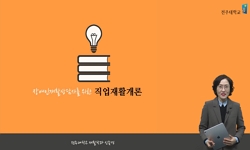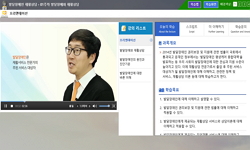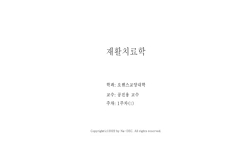Virtual reality (VR) is defined as an approach to user-computer interface that involves real-time simulation of an environment, scenario, or activity that allows for user interaction via multiple sensory channels. In recent years, virtual reality has ...
http://chineseinput.net/에서 pinyin(병음)방식으로 중국어를 변환할 수 있습니다.
변환된 중국어를 복사하여 사용하시면 됩니다.
- 中文 을 입력하시려면 zhongwen을 입력하시고 space를누르시면됩니다.
- 北京 을 입력하시려면 beijing을 입력하시고 space를 누르시면 됩니다.
https://www.riss.kr/link?id=A104794185
- 저자
- 발행기관
- 학술지명
- 권호사항
-
발행연도
2013
-
작성언어
-
-
주제어
가상현실 ; 뇌졸중 ; 재활 ; Virtual reality ; Stroke ; Rehabilitation
-
등재정보
KCI등재후보,SCOPUS,ESCI
-
자료형태
학술저널
-
수록면
16-22(7쪽)
-
KCI 피인용횟수
12
- 제공처
-
0
상세조회 -
0
다운로드
부가정보
다국어 초록 (Multilingual Abstract)
Virtual reality (VR) is defined as an approach to user-computer interface that involves real-time simulation of an environment, scenario, or activity that allows for user interaction via multiple sensory channels. In recent years, virtual reality has grown immensely with rapid advancement of VR technologies in the field of stroke rehabilitation. In this paper, current VR applications to the field of rehabilitation are reviewed. In the field of stroke rehabilitation, many clinical trials related to VR-based assessment and treatment have been performed to assess and treat arm dysfunction, walking ability,visuospatial problems, cognitive dysfunction, etc. Among them, VR is beneficial in improving arm function when compared with conventional therapy with limited evidence. Whether VR improves walking, visuospatial problems, or cognitive function has not been well established yet. However, VR can simulate the real environment without the risks arising from errors, and can also give a sense of immersion in the simulated environment and a concomitant feeling of ‘presence’. Moreover, VR provides the motivation of gaming factors. With these advantages, VR will be one of the major advanced technologies for assessment and managing post-stroke dysfunction in the future.
참고문헌 (Reference)
1 Burdea GC, "Virtual rehabilitation: benefits and challenges" 42 : 519-523, 2003
2 You SH, "Virtual reality-induced cortical reorganization and associated locomotor recovery in chronic stroke - An experimenter-blind randomized study" LIPPINCOTT WILLIAMS & WILKINS 36 (36): 1166-1171, 2005
3 Yang YR, "Virtual reality-based training improves community ambulation in indi-viduals with stroke: a randomized controlled trial" 28 : 201-206, 2008
4 Boian R, "Virtual reality-based post-stroke hand rehabilitation" 85 : 64-70, 2002
5 Crosbie JH, "Virtual reality in stroke rehabilitation: still more virtual than real" 29 : 1139-1146, 2007
6 Broeren J, "Virtual reality and haptics as a training device for movement rehabilitation after stroke: a single-case study" 85 : 1247-1250, 2004
7 Holden MK, "Virtual environments for motor rehabilitation: review" 8 : 187-211, 2005
8 Barfield W, "Virtual environments and advanced interface design" Oxford University Press 1995
9 Holden MK, "Virtual environment training: a new tool for neurorehabilitation" 26 : 62-71, 2002
10 Piron L, "The augmented-feedback rehabilitation technique facilitates the arm motor recovery in patients after a recent stroke" 94 : 265-267, 2003
1 Burdea GC, "Virtual rehabilitation: benefits and challenges" 42 : 519-523, 2003
2 You SH, "Virtual reality-induced cortical reorganization and associated locomotor recovery in chronic stroke - An experimenter-blind randomized study" LIPPINCOTT WILLIAMS & WILKINS 36 (36): 1166-1171, 2005
3 Yang YR, "Virtual reality-based training improves community ambulation in indi-viduals with stroke: a randomized controlled trial" 28 : 201-206, 2008
4 Boian R, "Virtual reality-based post-stroke hand rehabilitation" 85 : 64-70, 2002
5 Crosbie JH, "Virtual reality in stroke rehabilitation: still more virtual than real" 29 : 1139-1146, 2007
6 Broeren J, "Virtual reality and haptics as a training device for movement rehabilitation after stroke: a single-case study" 85 : 1247-1250, 2004
7 Holden MK, "Virtual environments for motor rehabilitation: review" 8 : 187-211, 2005
8 Barfield W, "Virtual environments and advanced interface design" Oxford University Press 1995
9 Holden MK, "Virtual environment training: a new tool for neurorehabilitation" 26 : 62-71, 2002
10 Piron L, "The augmented-feedback rehabilitation technique facilitates the arm motor recovery in patients after a recent stroke" 94 : 265-267, 2003
11 Jaffe DL, "Stepping over obstacles to improve walking in individuals with poststroke hemiplegia" 41 (41): 283-292, 2004
12 Merians AS, "Sensorimotor training in a virtual reality environment: does it improve functional recovery poststroke?" 20 : 252-267, 2006
13 Oujamaa L, "Rehabilitation of arm function after stroke: literature review" 52 : 269-293, 2009
14 Broeren J, "Neglect assessment as an application of virtual reality" 116 : 157-163, 2007
15 Piron L, "Motor learning principles for rehabilitation: a pilot randomized controlled study in poststroke patients" 24 : 501-508, 2010
16 Katz N, "Interactive virtual environment training for safe street crossing of right hemisphere stroke patients with unilateral spatial neglect" 27 : 1235-1243, 2005
17 Parsons TD, "Initial validation of a virtual environment for assessment of memory functioning: virtual reality cognitive performance assessment test" 11 : 17-25, 2008
18 Deutsch JE, "Improved gait and elevation speed of individuals post-stroke after lower extremity training in virtual environments" 28 : 185-186, 2004
19 Mirelman A, "Effects of training with a robot-virtual reality system compared with a robot alone on the gait of individuals after stroke" 40 : 169-174, 2009
20 Saposnik G, "Effectiveness of virtual reality using Wii gaming technology in stroke rehabilitation: a pilot randomized clinical trial and proof of principle" 41 : 1477-1484, 2010
21 Kang YJ, "Development and clinical trial of virtual reality-based cognitive assessment in people with stroke: preliminary study" 11 : 329-339, 2008
22 Jang SH, "Cortical reorganization and associated functional motor recovery after virtual reality in patients with chronic stroke: An experimenter-blind preliminary study" W B SAUNDERS CO-ELSEVIER INC 86 : 2218-2223, 2005
23 Laver K, "Cochrane review: virtual reality for stroke rehabilitation" 48 : 523-530, 2012
24 Kim DY, "Assessment of post-stroke extrapersonal neglect using a three-dimensional immersive virtual street crossing program" 121 : 171-177, 2010
25 Broeren J, "Assessment and training in a 3-dimensional virtual environ-ment with haptics: a report on 5 cases of motor rehabilitation in the chronic stage after stroke" 21 : 180-189, 2007
26 Dunning K, "An ankle to computer virtual reality system for improving gait and function in a person 9 months poststroke" 15 : 602-610, 2008
27 Adamovich SV, "A virtual reality-based system integrated with fmri to study neural mechan-isms of action observation-execution: a proof of concept study" 27 : 209-223, 2009
28 Kim K, "A virtual reality assessment and training system for unilateral neglect" MARY ANN LIEBERT INC 7 : 742-749, 2004
29 Housman SJ, "A randomized controlled trial of gravity-supported, computer-enhanced arm exercise for individuals with severe hemiparesis" 23 : 505-514, 2009
30 Sutherland IE, "A head-mounted three dimensional display. In: Association for Computer Machinery" Association for Computer Machinery 757-764, 1968
동일학술지(권/호) 다른 논문
-
- 대한의사협회
- 전민호
- 2013
- KCI등재후보,SCOPUS,ESCI
-
- 대한의사협회
- 오세일
- 2013
- KCI등재후보,SCOPUS,ESCI
-
- 대한의사협회
- 범재원
- 2013
- KCI등재후보,SCOPUS,ESCI
-
- 대한의사협회
- 최광성
- 2013
- KCI등재후보,SCOPUS,ESCI
분석정보
인용정보 인용지수 설명보기
학술지 이력
| 연월일 | 이력구분 | 이력상세 | 등재구분 |
|---|---|---|---|
| 2024 | 평가예정 | 해외DB학술지평가 신청대상 (해외등재 학술지 평가) | |
| 2021-01-01 | 평가 | 등재학술지 선정 (해외등재 학술지 평가) |  |
| 2020-12-01 | 평가 | 등재 탈락 (해외등재 학술지 평가) | |
| 2013-10-01 | 평가 | 등재학술지 선정 (기타) |  |
| 2011-01-01 | 평가 | 등재후보학술지 유지 (기타) |  |
| 2007-01-01 | 평가 | SCOPUS 등재 (신규평가) |  |
학술지 인용정보
| 기준연도 | WOS-KCI 통합IF(2년) | KCIF(2년) | KCIF(3년) |
|---|---|---|---|
| 2016 | 0.33 | 0.33 | 0.48 |
| KCIF(4년) | KCIF(5년) | 중심성지수(3년) | 즉시성지수 |
| 0.5 | 0.57 | 0.815 | 0.12 |







 KCI
KCI






